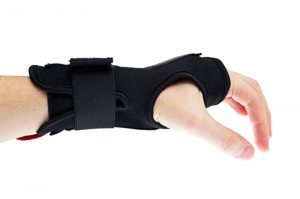If you have ever experienced tingling and numbness in your hands while sitting at your computer or sharp pain that travels from your wrist up your arm seemingly out of nowhere, then you likely have carpal tunnel syndrome. The following information will tell you what you need to know about this progressive and painful syndrome.
1. Carpal tunnel is not just the name – it’s the location. The carpal tunnel is a passage way amidst a series of ligaments and bones that is located on the inside of the wrist. The tunnel’s purpose is to protect the median nerve to your hand and the tendons that are responsible for bending the fingers.
responsible for bending the fingers.
Sometimes the syndrome is caused because of abnormalities in the anatomy of the wrist, but the most common cause is due to repetitive movements of the hand that comes from actions like typing
2. Pregnancy and health problems can cause carpal tunnel syndrome. Though the majority who suffer from carpal tunnel do so as the result of typing and patterns in the use of their hands at work, carpal tunnel is also a fairly common effect of pregnancy.
This is related to changes in the levels of body fluids and can also be the result of obesity, diabetes, and other conditions that alter your fluid levels. Rheumatoid arthritis, wrist fractures, and infections are other possible risk factors.
3. It is often fairly easy to diagnose. Most cases of carpal tunnel are diagnosed simply by your symptoms. Your workers compensation doctor will ask about the signs and symptoms you have been experiencing as well as the timing of symptoms since there are common patterns, such as while holding a telephone or steering wheel or waking you up at night.
 The location of your symptoms can also help confirm carpal tunnel syndrome. A physical exam is likely to accompany your discussion of symptoms history. If a fracture or injury is suspected other tests may be ordered.
The location of your symptoms can also help confirm carpal tunnel syndrome. A physical exam is likely to accompany your discussion of symptoms history. If a fracture or injury is suspected other tests may be ordered.
4. Mild cases are easily treated at home. If diagnosed early or if your symptoms are mild there are several things that you can do to improve your symptoms such as wearing a splint while you sleep and taking non-steroidal anti-inflammatory drugs like ibuprofen or naproxen to relieve pain. Cortisone injections at the doctor’s office can also relieve pressure on the nerve by decreasing inflammation.
5. Surgery may be required in severe or persistent cases. Though it is considered the last resort, severe carpal tunnel syndrome may require surgery to alleviate the symptoms. Though there are a couple of different ways the surgery can be performed, the goal is the same: to cut the ligament that is pressing on the median nerve to relieve pressure.
 The ligaments grow back with more room around them so that there is no more pressure on the nerve, but in very severe cases the symptoms may never resolve completely even after surgery.
The ligaments grow back with more room around them so that there is no more pressure on the nerve, but in very severe cases the symptoms may never resolve completely even after surgery.






Leave A Comment